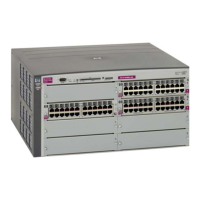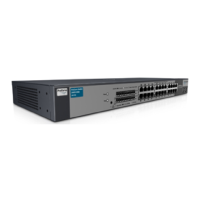Configuring the switch 179
OSPF Area Configuration
NOTE: This form is available only on the GbE2c Layer 2/3 Ethernet Blade Switch.
To display the following form, go to the OSPF Areas Configuration form. Select an area number, or open the
OSPF Areas folder and click Add OSPF Area.
The following table describes the OSPF Area Configuration controls:
Table 147 OSPF Area Configuration controls
Control Descriptions
Area number (0-2) Assigns a numeric identifier for the OSPF area.
Area ID Defines the area ID of the OSPF area number.
Enabled? Enables or disables the OSPF area.
Area Type Defines the type of area. For example, when a virtual link has to be established with the
backbone, the area type must be defined as transit.
• Transit area: allows area summary information to be exchanged between routing
devices. Any area that is not a stub area or NSSA is considered to be transit area.
• Stub area: is an area where external routing information is not distributed.
Typically, a stub area is connected to only one other area.
• NSSA: Not-So-Stubby Area (NSSA) is similar to stub area with additional
capabilities. For example, routes originating from within the NSSA can be
propagated to adjacent transit and backbone areas. External routes from outside the
Autonomous System (AS) can be advertised within the NSSA but are not distributed
into other areas.
Stub Area Metric (1-65535) Configures a stub area to send a numeric metric value. All routes received via that stub
area carry the configured metric to potentially influencing routing decisions.
Metric value assigns the priority for choosing the switch for default route. Metric type
determines the method for influencing routing decisions for external routes.
SPF Interval (0-255) Sets time interval between two successive SPF (shortest path first) calculations of the
shortest path tree using the Dijkstra’s algorithm.
Authentication Type? Defines the authentication method, as follows:
• None: No authentication required.
• Password: Authenticates simple passwords so that only trusted routing devices can
participate.
• MD5: This parameter is used when MD5 cryptographic authentication is required.

